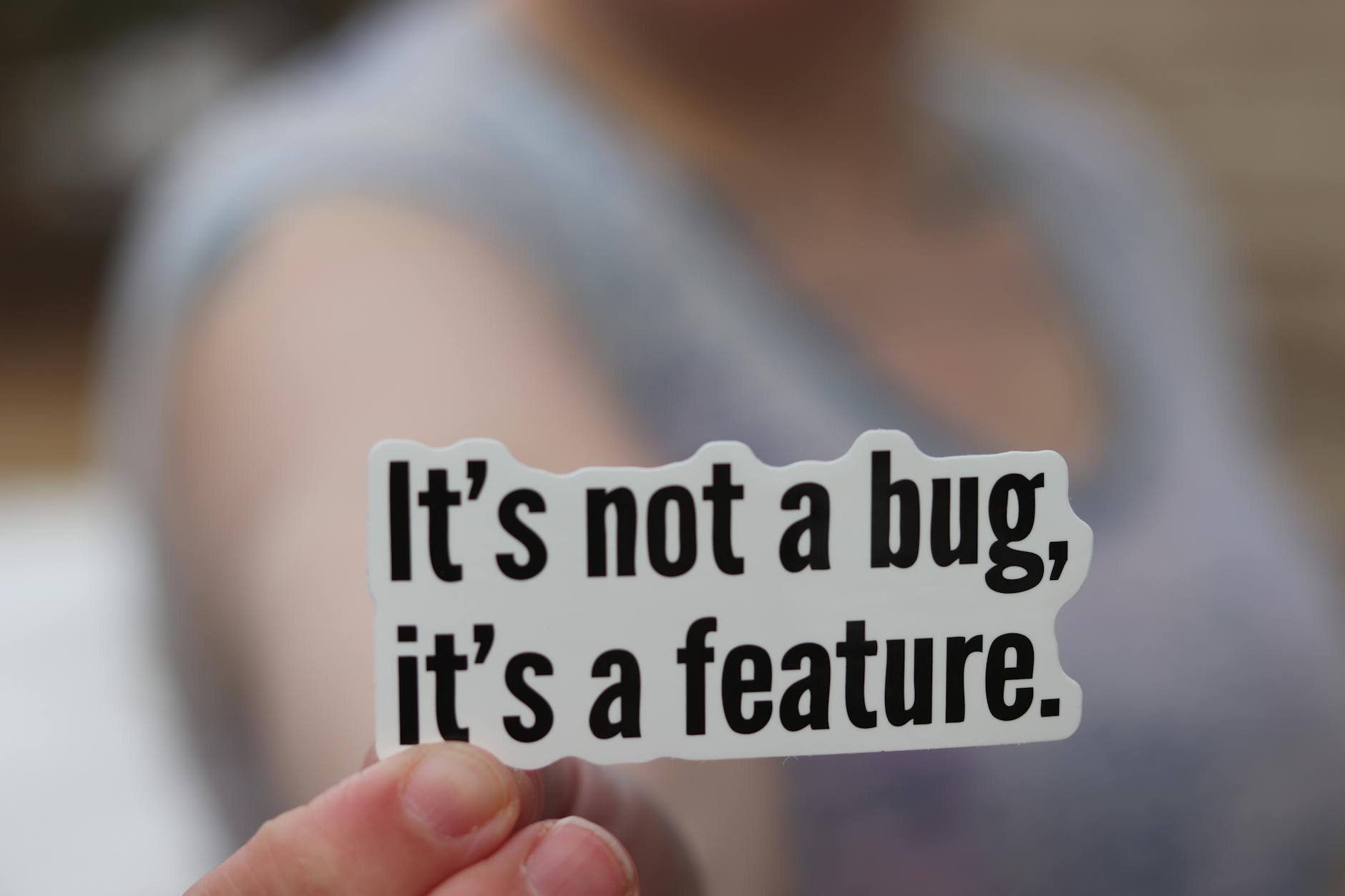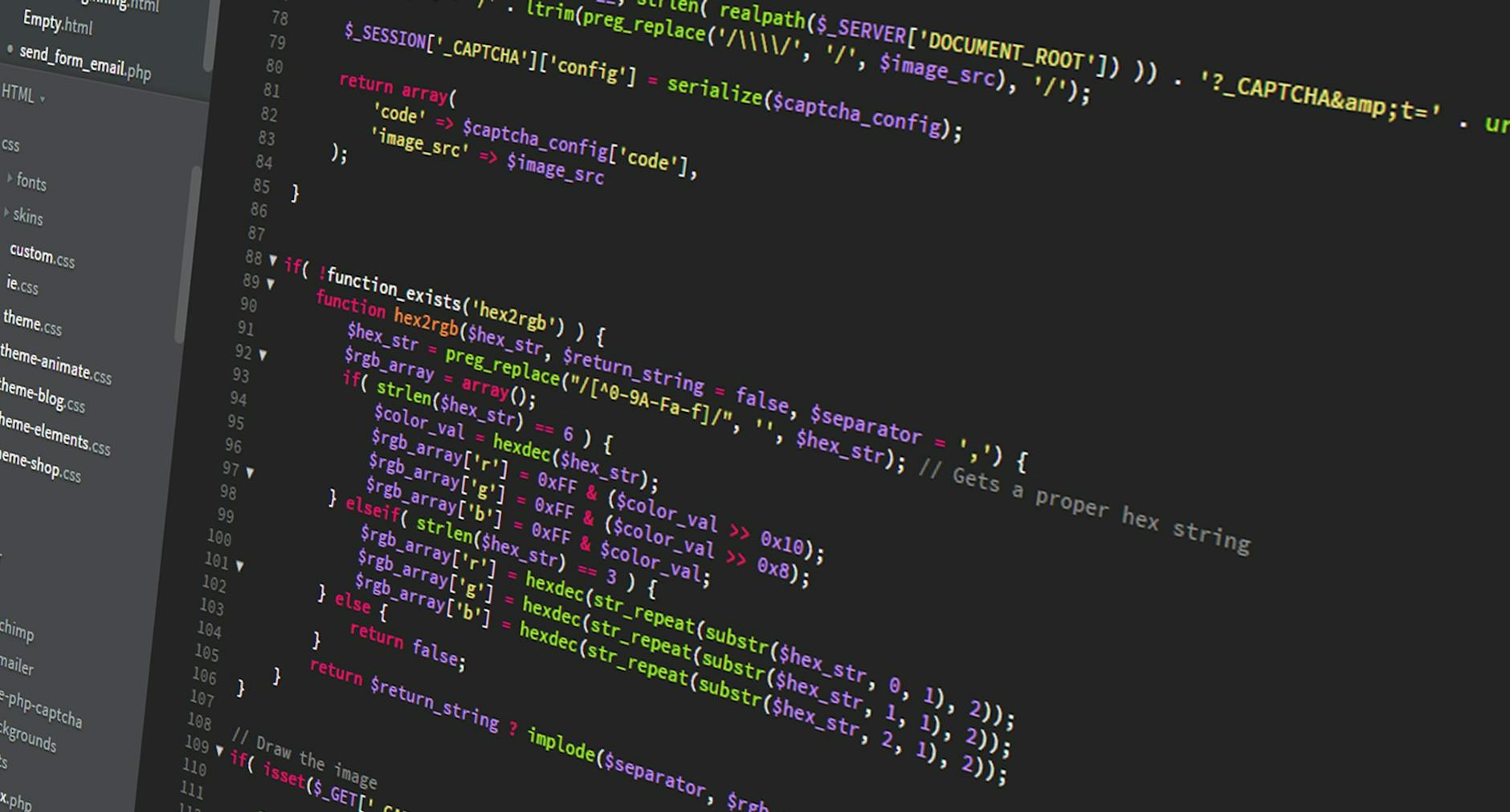Staying Ahead in Code: Mastering Emerging Programming Trends
Current Trends in Programming
Top 5 Programming Languages in 2023
In the coding universe, some languages are gobbling up the spotlight thanks to their flexibility, speed, and solid fan base. By 2023, the following programming languages have weaseled their way to the top, as shown by the TIOBE index:
| Rank | Programming Language | Popularity Index (%) |
|---|---|---|
| 1 | Python | 14.32 |
| 2 | C | 13.45 |
| 3 | Java | 11.23 |
| 4 | C++ | 10.67 |
| 5 | JavaScript | 9.53 |
- Python: Loved for its straightforward syntax and ability to do just about anything, Python stays a top pick for folks in data science, machine learning, and web development.
- C: Praised for doing the heavy lifting with its low-level prowess, C is the go-to for system and embedded programming.
- Java: It’s sturdy and runs anywhere, so it’s great for big-time apps in business environments.
- C++: A favorite in making games, real-time simulations, and systems apps, thanks to its knack for efficiency.
- JavaScript: The king of web development, especially for front-ends, it’s a must-have for anything web.
Java’s Relevance in 2023
Java’s holding its ground in 2023 as a must-have tool, thanks to its cool features and widespread love. The RedMonk Programming Language Rankings for Q1 2023 put Java in third place, just a smidge behind the ever-popular JavaScript and Python.
Why Java’s Still a Big Deal:
| Feature | Description |
|---|---|
| Structured Concurrency API | Tackles those pesky multithreading issues, making concurrent tasks a breeze. |
| Virtual Threads | Gives a better handle on thread management, a boon for apps needing lots of throughput. |
| Pattern Matching for switch | Makes code cleaner and less wordy with smart syntax. |
| String Templates | Gives an easier and tidier way to juggle strings in code. |
All these tweaks keep Java fresh, nudging developers to keep it in their toolkit. Java’s ability to run anywhere without batting an eye, heaps of libraries, and a buzzing community make it a staple across industries like finance, online shopping, and scientific exploration.
Emerging Programming Trends
Keeping an eye on emerging programming trends is like having a secret map to the future gizmos-and-gadgets club. Here, we’re dishing out the lowdown on two hot topics: eco-friendly tech in programming and making artificial intelligence as trustworthy as your grandma’s cookie jar.
Sustainable Technology in Programming
With the planet getting hotter and folks worrying about polar bears, the tech world wants to be part of the solution, not the problem. By 2027, one in four tech bigwigs will have their paychecks tied to green technology (Zühlke). Sustainable tech is all about playing nice with mother nature and hooking us up with gizmos that don’t guzzle energy like a thirsty camel.
| Year | CIOs’ Pay Linked to Green Tech Fun |
|---|---|
| 2023 | 10% |
| 2027 | 25% |
Choosing the right coding tools, turning those data centers into energy-saving ninjas, and writing code that doesn’t waste electrons—that’s the name of the game. Developers are snooping around for tech that sips power and leaves a tiny carbon footprint, while keeping the Earth’s future in mind.
AI Trust and Security Management
Now, with AI getting a brain boost, we gotta make sure it acts right. Imagine by 2026, companies using AI trust and security tricks will be making decisions with 50% more accuracy (Zühlke). It’s like swapping out your blurry glasses for a crystal-clear pair.
| Year | Boost in Brainy Decisions | Boost in AI Good Vibes |
|---|---|---|
| 2023 | 20% | 25% |
| 2026 | 50% | 50% |
This trust-and-security magic includes making sure your data isn’t spilling all over the place, keeping AI fair and square, and following the rules. It’s about giving AI a moral compass so it can be smart and nice at the same time.
By hopping on these trendy bandwagons, programmers can make sure their skills are worth their weight in silicon, while pushing for a future that’s both planet-friendly and AI-safe.
Programming Language Pros and Cons
Getting a grip on what makes different programming languages tick and how CIOs are raking it in for pushing eco-friendly tech is a nugget of wisdom for any rookie coder. So, let’s break down why Java still rocks and how these head honchos’ paychecks are getting a green boost.
Advantages of Java
Java’s still the toast of the coding town, sitting pretty in the top five of 2023’s programming languages, according to the TIOBE index.
Main Perks
- Runs Everywhere: Thanks to the Java Virtual Machine (JVM), Java can flex its muscles on any operating system.
- Strong Squad: A bustling, active community shores up bug fixes and new updates.
- Simplifies Concurrent Tasks: With Java 21’s Structured Concurrency, juggling tasks became a breeze.
- Virtual Threads: Makes multitasking apps run as smooth as butter by letting you handle more tasks at once.
- Code Makeover: Pattern Matching for Switch keeps your code clean and legible.
- Easy Strings: Tinkering with strings is a piece of cake thanks to String Templates.
| Feature | Perks |
|---|---|
| Structured Concurrency API | Makes multitasking a cinch |
| Virtual Threads | Squeezes out more efficiency in multitasking apps |
| Pattern Matching for Switch | Tidies up and eases reading your code |
| String Templates | Simplifies making and managing strings |
Java’s staying power is all about its knack for change and steady release rhythm, keeping it a mainstay in software game (Digma).
Benefits of CIOs Compensation
More and more, CIOs are cashing in by championing sustainable tech drives. Come 2027, a quarter of these tech whizzes will see a chunk of their pay tied to green innovations.
Main Wins
- Cash for Creativity: Linking their pay to sustainability fuels fresh ideas.
- Green Gains: Pushes for solutions that keep Mother Earth smiling.
- Doing Good Stuff: Bolsters projects with social benefits, boosting the company’s image.
| Year | CIOs Percentage | Green Pay Connection |
|---|---|---|
| 2023 | 10% | Eco-friendly initiatives kick off |
| 2027 | 25% | Bigger bucks tied to green strategies |
These shifts underline sustainable tech’s rising star, paving a promising road for coders and tech bigwigs alike.
Grasping Java’s perks and heartening comp trends for CIOs arms young programmers with the savvy they need to thrive in the coding scene and fast-track their career paths.
Market Analysis of Programming Languages
Programming Trends Adoption
Programming languages never sit still; they’re always in flux, shifting gears with popularity battles driven by versatility, performance, and the buzz in their communities. In 2023, the TIOBE index flags Java, Python, C, and C++ as top dogs in the coding kennel. RedMonk’s 2023 report slots Java at number three, trailing JavaScript and Python, based on GitHub and StackOverflow buzz.
| Programming Language | Popularity (TIOBE) | Popularity (RedMonk) |
|---|---|---|
| JavaScript | N/A | 1 |
| Python | 1 | 2 |
| Java | 4 | 3 |
| C | 2 | N/A |
| C++ | 3 | N/A |
What makes a language trendy? Factors like community vibes, zippy performance, and the latest industry fixations drive adoption. Gartner’s crystal ball predicts a jump in platform engineering squads in big-name software outfits—45% in 2022 to 80% by 2026 (Zühlke). This highlights why getting cozy with platform engineering trends is becoming a hot ticket, making development smoother and organizations happier.
Impact of Emerging Technologies
New tech flavors are mixing things up for programming languages and their usage. AI, ML, and these mysterious machine customers are influencing how languages are chosen and implemented across industries.
Picture this: by 2028, Gartner throws out there that machine customers will shut down 20% of digital storefronts. Plus, more than half of sales and service hubs will be chatting with these tech-savvy machines by 2027 (Zühlke). This tango between AI and coding snippets means programmers gotta pick up languages that groove with AI and ML frameworks.
Python’s your buddy here, thanks to its clean syntax and library jungle for AI and ML. Java’s not staying in the shadows either, boasting flexibility, a solid fan base, and a knack for big enterprise-scale stuff (Digma).
| Emerging Technology | Related Programming Languages | Forecast Impact |
|---|---|---|
| Artificial Intelligence | Python, Java | 20% digital storefronts obsolete by 2028 |
| Machine Learning | Python, R | >50% sales/service centers interact with machine customers by 2027 |
| Platform Engineering | Java, C++ | 80% of large organizations establish teams by 2026 |
Young coders are entering a world where staying on the cutting edge is key—be it by digging into AI-skewed languages or grasping the ins and outs of machine customer applications. The future of programming is staring straight at these very tech advancements with open eyes.
AI in Programming
Using artificial intelligence in programming is the hot new thing, shaking up how coders do their magic with promises of boosting productivity. Here, we’ll dig into how AI is making developers’ lives easier and what could be in store for software creators down the line.
Enhancing Developer Productivity
AI tools are flipping the script for programmers, making tedious tasks a breeze and freeing up brainpower for tricky problems and creative software magic. Tools like ChatGPT whip up code snippets, while DALL-E churns out funky visuals, adding pizzazz to projects.
Why AI rocks in programming:
- Code Touch-Up: AI spots the pesky slow-downs and suggests fixes.
- Bug Busting: AI catches and kicks those nasty code bugs out the door.
- Handy Syntax Tips: Suggests the nitty-gritty of coding in real-time, saving loads of time.
- Old Code Makeover: Keeps the vintage code running smooth like a classic car.
- Code Check: AI chips in during reviews, spotlighting top-notch coding vibes.
Per UC San Diego Extended Studies, bringing AI into programming can give productivity a serious shot in the arm by taking on a chunk of developer work.
The Future of Software Developers
AI’s creeping into the programming space has stirred up chatter about what comes next for developers. Is AI going to edge out coders? Nah, many say it’s more like getting a high-tech sidekick.
Survey Insights:
| Opinion | Percentage |
|---|---|
| AI will replace development efforts | 30% |
| AI will be a helping hand and amp up coding efforts | 70% |
(Brainhub)
Experts are betting AI will take on some coding gigs by the year 2040, according to the US Department of Energy’s Oak Ridge National Lab. But don’t start job-hunting just yet; meanwhile, AI’s more the Robin to your Batman, boosting your super skills rather than sidelining them (Brainhub).
Skills future coders gotta master:
- AI and ML Basics: Get the lowdown on algorithms and models.
- Think Like an Innovator: Use AI to chase down creative solutions.
- Crunch the Numbers: Let AI be your data guru for smarter choices.
- Roll with the Punches: Keep tabs on fresh AI tech and upcoming trends.
Jumping on the AI train opens doors for rookie programmers to crank up their productivity, stay one step ahead, and cook up software that’s out of this world.
Low-Code vs. No-Code
Low-Code Development Platforms
Low-code development platforms (LCDPs) are all about making your life a tad easier—ideal if you’re knee-deep in code and looking for a shortcut that doesn’t land you in tech trouble. These platforms mix a bit of manual coding with nifty visual tools like drag-and-drop and menus (IBM). The aim? Let you put more energy into what makes your app stand out, not the behind-the-scenes grunt work.
What You’ll Find in Low-Code Platforms:
- Handy development tools (IDEs if you want to get fancy)
- Ready-to-use bits and pieces like APIs and templates
- Visual tools that connect things up without headaches
- Cloud-based setups to keep it all running smoothly (IBM)
You’ll still need a bit of coding know-how, but these platforms give more room for personalization than a no-code option. Expect a learning curve, but with great adaptation, you can get to crafting clever apps that you’re proud to show off.
| Feature | Low-Code |
|---|---|
| Coding Know-How | Yes, brush up those skills |
| Build Speed | Pretty quick, but not quite no-code fast |
| Tailor-Made Features | High—go wild with creativity |
| Whoopsies (Errors) | Medium (manual coding part) |
| App Complexity | Handles the tricky stuff |
| AI Smarts | More AI getting in the mix |
Versatility of Low-Code Tools
Low-code tools? They’re like that Swiss Army knife in your tech toolbox—they do just about everything from the simple to the bafflingly complex. You’re free to toss some custom code on top, making them perfect for bespoke business stuff. With the cool AI features popping up in 2024, you’re talking next-level smart apps (Teiva Systems).
Why Low-Code is Worth a Shot:
- Customizable Goodness: Fine-tune with added code.
- Speedy: Still leaps and bounds ahead of traditional, tedious coding.
- Handles the Toughies: Complex apps are a go.
- AI Friendly: Join the uprising of AI-infused inventions.
Wrapping it all up, low-code is a solid pick for crafting apps with pizzazz, fitting the bill for anything from entry-level to intricate fare. And with AI sneaking in, these platforms are keeping pace with the tech times, proving they’re not just a flash in the pan.
Impact of Generative AI
Generative AI shakes up the programming scene, turning heads with its ability to churn out content at lightning speed. It’s like having a supercharged assistant who takes care of the boring stuff, giving developers the freedom to dive into the nitty-gritty details of their work.
Automating Content Creation
Think of generative AI like your right-hand buddy—pumped up with techy smarts from big-brain models and transformers. It doesn’t just spit out text; it spits out code, images, and digital swag too. Enter tools like ChatGPT and DALL-E, your new besties in cranking out code bits, juicing up your existing scripts, and even giving bugs the boot.
According to Business Models Inc., bringing generative AI into the mix can shave off a cool 22 to 42% of time across your coding tasks. Think of it as cutting down the grunt work, making more room for brainy stuff and creativity. Plus, it’s a game-changer for whipping up personalized experiences and cooking up new products just like you imagined.
Time Savings with Generative AI
Generative AI is speeding through programming like a freight train, axing routine tasks and giving productivity a nice bump. It’s like handing over the grunt work to an AI buddy, so you get to fiddle with the fun and tough stuff instead (UC San Diego Extended Studies).
James Gappy reminds us all—knowing your programming basics is non-negotiable to harness AI’s power. While the AI can whip up nifty solutions, it’s up to programmers to read the code as if it’s the morning newspaper and tweak it as needed.
Here’s a peek at how much time gen-AI can save you in programming grindwork:
| Task | Time Reduction (%) |
|---|---|
| Code Generation | 22-30 |
| Code Optimization | 30-35 |
| Debugging | 35-42 |
Figures based on Business Models Inc.
Generative AI isn’t just a slick trick—it’s shaking up the programming world by cranking up efficiency and lighting up paths for fresh ideas and creativity in coding.
Programming Careers vs. AI
Artificial intelligence is shaking up the way programmers work—not by taking their jobs but by changing the playbook. It’s a game changer for young folks blitzing into programming.
AI and Programmers: The Dynamic Duo
Think of AI as the sidekick every programmer needs—it supercharges what they can do. Here’s how AI lends a hand:
- Throws syntax suggestions your way
- Keeps software tidy
- Offers feedback on code
- Points out top coding moves
With these bionic buddies, programmers can clear the decks of mundane stuff. That means more time to tackle tricky problems, spin up new ideas, and cook up fancy software. As AI gets smarter, it’ll handle the grunt work while humans brainstorm and design slicker software (Brainhub’s take).
New Tricks for the Future Programmers
The rise of AI ain’t all smooth sailing because it demands folks to level up their skills. Goodbye yesteryear’s hard-coding; hello big data wrangling to train those savvy apps. Key skills on the must-have list include:
- Data wizardry
- Mechanical brain-making
- Code crafting
As Brainhub spills the beans, the clamor for these gigs has more than doubled lately. Here’s a peek:
| Job Role | Demand Jump (%) |
|---|---|
| Data Sorcerer | 120 |
| Magician of Machines | 130 |
| Code Virtuoso | 110 |
Getting comfy with these hot roles and sharpening relevant chops lays the groundwork for programmers in a world where AI is part of the furniture. We’ll see a need for smarts that AI can’t touch just yet, like solving real head-scratchers, coming up with fresh concepts, and mapping out software blueprints (UC San Diego has the scoop).













